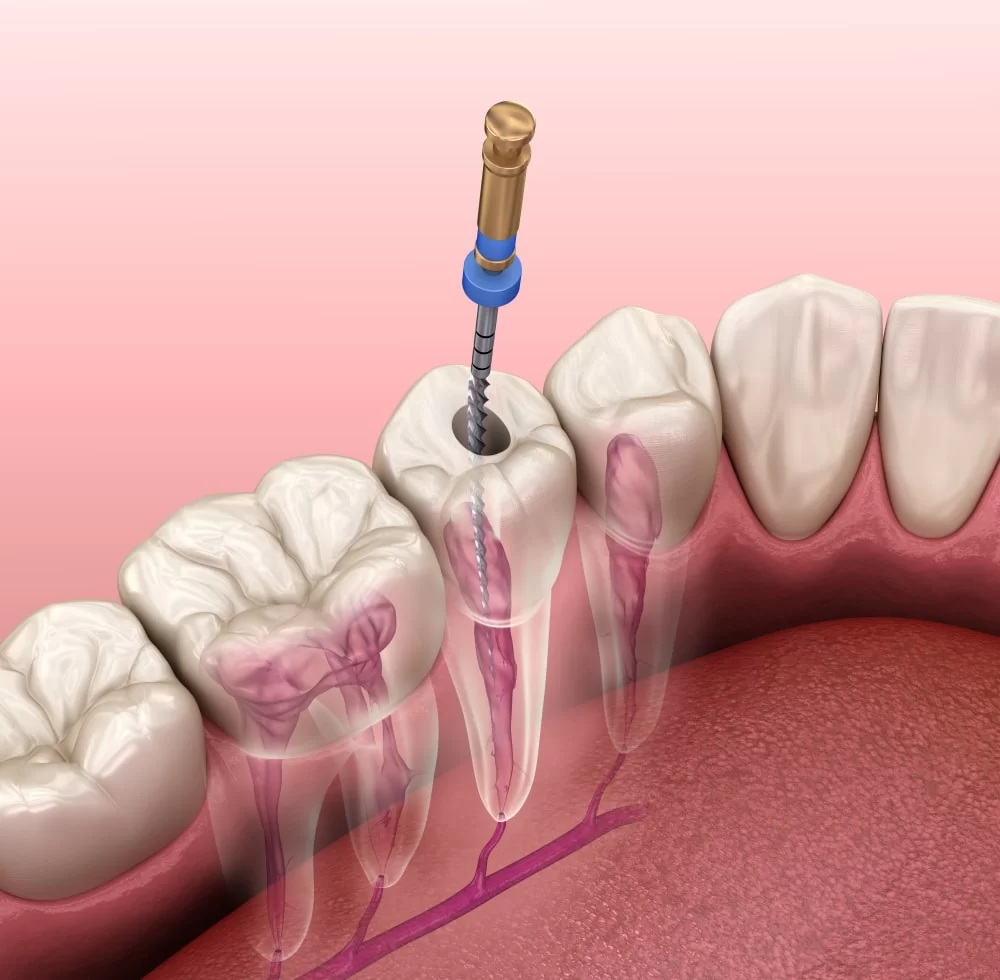
Understanding Pulpitis and Why You Might Need a Root Canal
If you’ve been experiencing sudden, severe tooth pain, you may be wondering what’s going on inside your tooth. It could be a condition known as pulpitis, an infection or inflammation of the dental pulp. As someone who has gone through the process of treating pulpitis myself, I can tell you that while it sounds daunting, understanding the condition and treatment options can make all the difference in your experience. In this article, I’ll explain everything you need to know about pulpitis, how it’s treated, and why a root canal might be necessary to save your tooth.
1. What is Pulpitis?
Pulpitis is an infection or inflammation of the soft tissue inside your tooth, known as the dental pulp. The pulp contains nerves, blood vessels, and connective tissue, and it plays a crucial role in the tooth's overall health. When this tissue becomes infected or inflamed due to decay, trauma, or a deep cavity, it can cause significant discomfort, sometimes leading to excruciating pain. There are two main types of pulpitis: reversible and irreversible.
Reversible Pulpitis
Reversible pulpitis occurs when the pulp becomes inflamed but isn’t permanently damaged. In this case, the tooth can often heal itself if the underlying cause (like a cavity or minor trauma) is addressed. Treatment for reversible pulpitis typically involves removing the source of irritation, such as filling a cavity or treating a minor crack, and the pain usually subsides as the tooth heals.
Irreversible Pulpitis
Irreversible pulpitis is more serious and occurs when the infection or inflammation has caused permanent damage to the pulp. This type of pulpitis is often associated with intense, persistent pain that worsens over time. In cases of irreversible pulpitis, the damaged pulp can no longer heal on its own, and a root canal becomes necessary to save the tooth.
2. What Are the Symptoms of Pulpitis?
The symptoms of pulpitis can vary depending on the severity of the condition. The most common symptom is intense tooth pain, which can come and go or be constant. I remember when I first experienced pulpitis, the pain was sharp and made it difficult to focus on anything else. It was especially noticeable when I drank something hot or cold, which caused the pain to intensify. Other symptoms of pulpitis may include:
- Sensitivity to hot and cold foods or beverages
- Throbbing or persistent tooth pain
- Swelling in the gums around the affected tooth
- Tenderness when chewing or touching the tooth
- In some cases, fever or a bad taste in the mouth if an infection has spread
When to See a Dentist
If you experience any of these symptoms, it’s essential to see a dentist as soon as possible. I learned from my experience that waiting too long can lead to more significant issues, including the potential loss of the tooth. The sooner you catch pulpitis, the more likely it is that a less invasive treatment will be sufficient.
3. How is Pulpitis Treated?
The treatment for pulpitis depends on whether the condition is reversible or irreversible. If the pulpitis is reversible, your dentist will likely recommend removing the source of irritation, such as filling a cavity or addressing any trauma to the tooth. However, in cases of irreversible pulpitis, more extensive treatment is needed to save the tooth.
Root Canal Treatment: The Standard Solution
If you have irreversible pulpitis, the best course of action is often a root canal. During a root canal, the dentist removes the infected or inflamed pulp from inside the tooth, cleans the area thoroughly, and then seals it. While the thought of a root canal may sound intimidating, it’s a highly effective procedure for saving teeth and alleviating pain. I can tell you from my own experience that the procedure wasn’t nearly as bad as I expected, and the relief from the pain was immediate.
What Happens During a Root Canal?
During a root canal, your dentist will numb the affected area with local anesthesia to ensure that you are comfortable throughout the procedure. The dentist will then create a small opening in the top of the tooth to access the pulp. Once the pulp is removed, the inside of the tooth is cleaned and disinfected. In many cases, the dentist will fill the space with a rubber-like material and seal the opening. If the infection is severe, your dentist may recommend placing a crown on the tooth to provide additional strength and protect it from further damage.
The Benefits of Root Canal Treatment
Root canal treatment is the most effective way to save a tooth that is suffering from irreversible pulpitis. It helps to eliminate the infection, alleviate pain, and restore the tooth’s function. In my case, after undergoing the procedure, I was able to keep my tooth and continue using it without any issues. The process is safe, and the recovery time is usually quick. Most people experience only mild discomfort after the procedure, which can be managed with over-the-counter pain relievers.
4. What Happens If Pulpitis Is Left Untreated?
If pulpitis is left untreated, the infection can spread to the surrounding tissues and lead to abscess formation. This can cause more severe pain, swelling, and even fever. In some cases, the infection can spread to the jawbone, leading to more extensive treatment or tooth extraction. I’ve seen firsthand how delaying treatment can make the situation much worse. The longer you wait, the higher the risk of complications that may require more invasive procedures.
Preventing Pulpitis
Preventing pulpitis involves maintaining good oral hygiene and seeking dental care as soon as you notice any issues with your teeth. Regular checkups and cleanings help catch potential problems before they become serious. If you experience tooth pain or discomfort, don’t wait—schedule a visit with your dentist as soon as possible. By being proactive about your oral health, you can avoid many of the issues that lead to pulpitis in the first place.
5. Final Thoughts on Root Canal and Pulpitis Treatment
While the thought of needing a root canal might seem scary at first, it’s important to remember that it is a common and highly effective procedure for treating pulpitis and saving your tooth. I can confidently say that after experiencing the treatment myself, I would recommend it to anyone who needs it. The relief from the pain and the ability to keep my tooth was well worth the procedure. If you’re dealing with pulpitis, don’t hesitate to seek treatment—it could save your tooth and spare you from more severe issues down the road.
If you’re experiencing tooth pain or think you might need a root canal, visit Dentistry Toothtruth to find the best dental clinic near you for personalized care and expert treatment options.







 Yonkers Dental Implants Center4.0 (63 review)
Yonkers Dental Implants Center4.0 (63 review) Gardena Dental Care4.0 (416 review)
Gardena Dental Care4.0 (416 review) Apple Grove Dental4.0 (536 review)
Apple Grove Dental4.0 (536 review) Arlington Family & Cosmetic Dental Associates4.0 (121 review)
Arlington Family & Cosmetic Dental Associates4.0 (121 review) Eastern Dental3.0 (336 review)
Eastern Dental3.0 (336 review) Small Smiles LLC4.0 (58 review)
Small Smiles LLC4.0 (58 review) The Importance of Oral Health Education During Pregnancy for a Healthy Pregnancy
The Importance of Oral Health Education During Pregnancy for a Healthy Pregnancy Best Tips for Brushing Your Teeth Properly for Healthy Gums: Essential Techniques for Oral Health
Best Tips for Brushing Your Teeth Properly for Healthy Gums: Essential Techniques for Oral Health Why Skipping Dental Checkups Can Lead to Bigger Oral Health Problems
Why Skipping Dental Checkups Can Lead to Bigger Oral Health Problems Advantages of Porcelain Dental Restorations
Advantages of Porcelain Dental Restorations How Can Diabetes Cause Tooth and Gum Problems? Preventing and Managing Oral Health Issues
How Can Diabetes Cause Tooth and Gum Problems? Preventing and Managing Oral Health Issues Healthy Habits for Promoting Good Oral Health and Hygiene: Tips for a Healthy Smile
Healthy Habits for Promoting Good Oral Health and Hygiene: Tips for a Healthy Smile